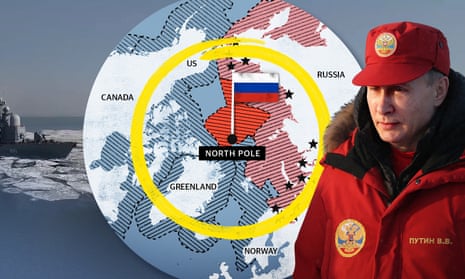In a significant move underscoring rising tensions in the High North, Germany has announced the deployment of naval forces to the Arctic, citing growing concerns over Russia’s increasing military presence in the region.
Defense Minister Boris Pistorius confirmed the decision in a press briefing on Wednesday, stating that Germany will send at least two warships to participate in joint exercises with NATO allies. This marks the country’s most assertive naval movement in the Arctic in recent years and signals a strategic shift as Berlin aligns more closely with allies concerned about security in the region.
“Russia is not only expanding its military infrastructure in the Arctic but actively militarizing the region,” Pistorius said. “We cannot stand by while the rules-based international order is undermined in one of the world’s most vulnerable ecosystems.”
At a joint press conference in Copenhagen with his Danish counterpart, Troels Lund Poulsen, Pistorius declared “as early as this year, Germany will show its presence in the North Atlantic and the Arctic.”
The deployment, dubbed ‘Atlantic Bear’, will be a response to mounting maritime threats and because “Russia is militarizing the Arctic,” he claimed.
A support ship would “go from Iceland to Greenland and then on to Canada” to take part in joint military drills with NATO allies, including Denmark, Norway, and Canada, Pistorius claimed.
“In addition, we will deploy our maritime patrol aircraft, submarines, and frigates to demonstrate our commitment to that region,” he added.
Germany, a NATO member, has previously limited its Arctic involvement to scientific missions and support roles in multilateral drills. However, the recent developments have prompted Berlin to reevaluate its position.
The deployment, expected to occur later this year, will include the frigate Baden-Württemberg and a supply vessel, both equipped for operations in cold climates and capable of integrating with NATO maritime forces.
Importance of Arctic
The Arctic has now become a major point of clash for world powers die to many reasons.
Access to natural resources: The Arctic is estimated to hold 13% of the world’s undiscovered oil and 30% of its untapped natural gas. As ice recedes, these resources are becoming more accessible.
New shipping routes: Melting ice is opening up navigable sea routes like the Northern Sea Route, which could cut transit time between Europe and Asia by up to 40%.
Strategic military positioning: The Arctic provides advantageous locations for radar, missile defense, and early warning systems due to its proximity to North America, Europe, and Russia.
National sovereignty and influence: Countries are reasserting claims and influence in the region through military presence, research bases, and legal claims under the UN Convention on the Law of the Sea (UNCLOS).
Germany’s announcement comes amid broader efforts by NATO to boost its presence in the Arctic. The alliance has identified the region as a potential flashpoint in the evolving security environment, particularly following Finland’s and Sweden’s accession to NATO, which extends the alliance’s northern frontier.
Military analysts view Germany’s move as both symbolic and strategic. “Berlin is sending a message of solidarity to its allies and a warning to Moscow that Europe is unified in its approach to Arctic security,” said Dr. Katharina Meier, a defense expert at the Berlin Security Forum.
Militarization of Arctic
While Russia remains the most active in terms of military buildup, it is not alone. Several countries are reinforcing their presence in the Arctic:
Russia has built over 50 military outposts across its Arctic territory, reactivated Soviet-era bases, stationed advanced missile systems, and increased its fleet of nuclear-powered icebreakers. Its Northern Fleet is central to its Arctic operations.
The United States has been ramping up its Arctic capabilities, including upgrading air bases in Alaska, investing in new icebreakers, and holding regular military drills with allies. Washington has labeled the Arctic a “strategic priority.”
Canada has expanded military patrols in the Northwest Passage and is investing in new Arctic-capable ships and surveillance systems to reinforce sovereignty and support NATO missions.
Norway, as a NATO member bordering the Arctic, has increased its defense spending, conducted joint Arctic training missions, and modernized its submarine and air defense capabilities.
China, though not geographically an Arctic state, has declared itself a “near-Arctic power” and is increasing its scientific presence, investing in Arctic infrastructure, and strengthening military cooperation with Russia.
Moscow’s Response
There has been no immediate response from the Russian government. However, the Kremlin has consistently argued that its Arctic military activities are defensive and essential to protecting its economic interests and national security.
The Kremlin has insisted that NATO’s continuing militarization of the region is unwarranted, and that Russia will mirror the moves taken by the bloc.
In March, Putin reiterated that Moscow is “concerned by the fact that NATO countries as a whole are more frequently designating the far north as a bridgehead for possible conflicts.”
“I would like to emphasize that Russia has never threatened anyone in the Arctic,” the Russian president said. He stressed, however, that Moscow would “reliably protect” its interests in the region by reinforcing its military contingent in response to Western actions.
Tensions in the Arctic have been growing steadily since the Russia Ukraine war. Now the long drawn clash is reshaping European defense priorities and reigniting Cold War-style rivalries even in the Arctic with western Europe now getting heavily involved.








